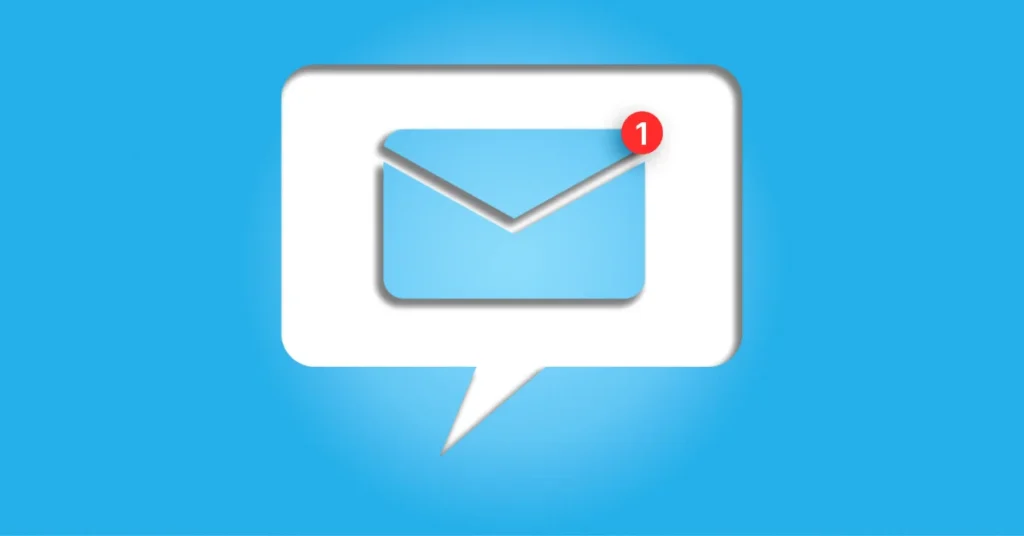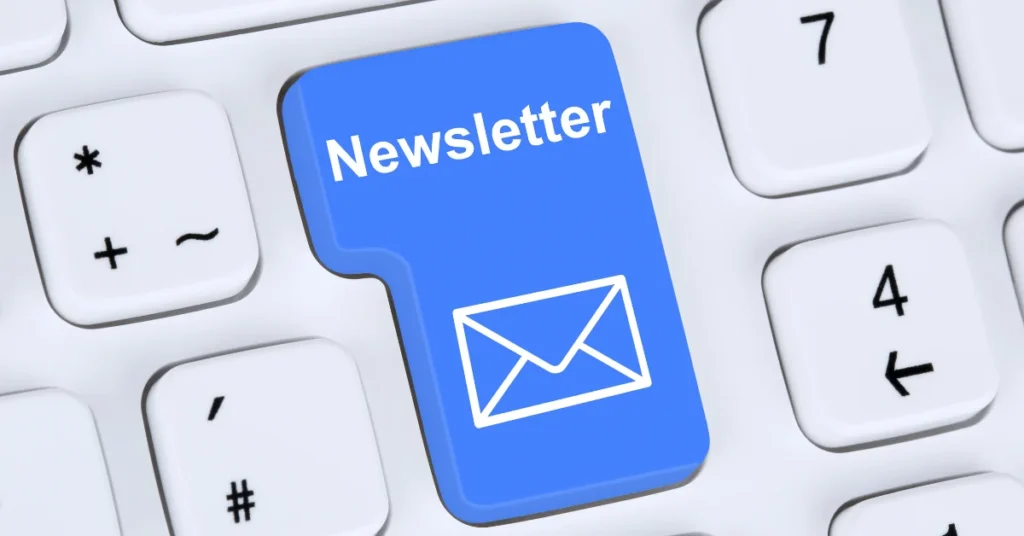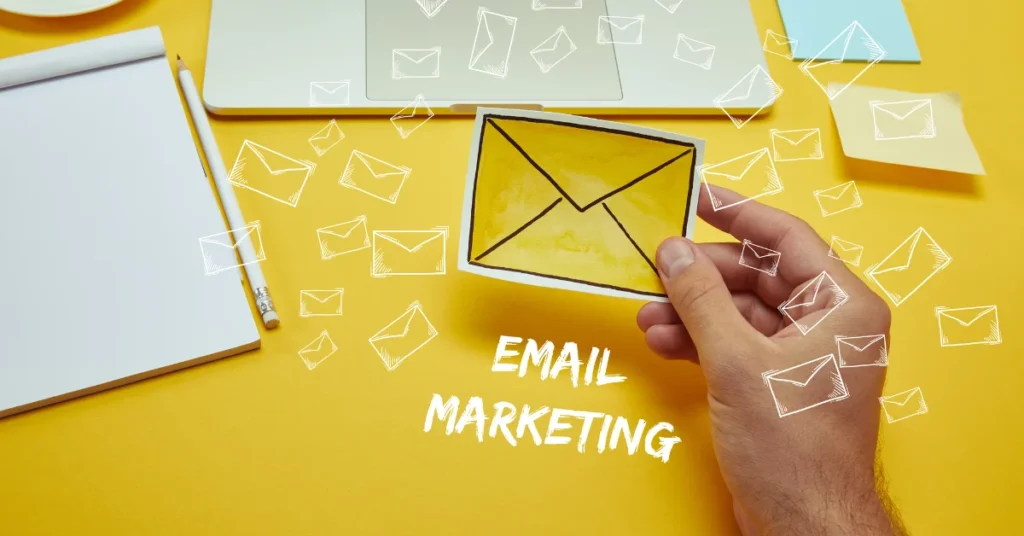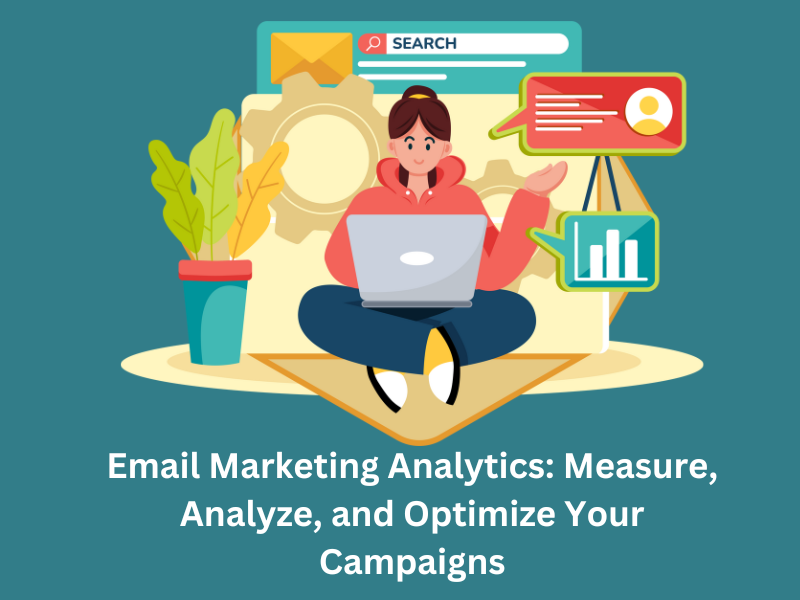In the fast-paced world of digital marketing, staying connected with your audience is more important than ever. One of the most effective ways to maintain this connection is through drip email campaigns. Unlike traditional email marketing, which often sends out one-off messages to a broad audience, drip campaigns are a more targeted, strategic approach. They involve sending a series of pre-written emails to subscribers over a period of time, based on specific actions they take or stages they reach in their customer journey.
Imagine being able to automatically nurture leads, onboard new customers, or re-engage inactive users—all without manually sending a single email. That’s the power of drip email campaigns. By delivering the right message at the right time, drip campaigns help build lasting relationships, increase engagement, and drive conversions. In this blog post, we’ll dive deep into the world of drip email marketing. We’ll explore what makes these campaigns so effective, walk through the steps to create your own, and share tips on how to manage them for maximum impact.
Ready to elevate your email marketing strategy? Let’s get started!
What is a Drip Email Campaign?

A drip email campaign is a series of automated emails sent to subscribers based on specific actions they take or stages they reach within their customer journey. Unlike regular email marketing, which involves sending out standalone emails to a wide audience, drip campaigns are designed to be more personalized and timely. They “drip” useful information, tips, and offers to subscribers over time, guiding them through a predefined path towards a specific goal.
Drip campaigns are often triggered by user behavior or predefined conditions. For example, a welcome series might be initiated when a new user signs up for your newsletter, sending them a sequence of emails that introduce your brand, showcase popular content, and encourage engagement. Similarly, a re-engagement campaign might target subscribers who haven’t interacted with your emails in a while, offering incentives to bring them back into the fold.
These campaigns can take many forms, including:
- Welcome Series: Aimed at new subscribers, this series introduces them to your brand and provides valuable information or resources.
- Onboarding Series: Designed to help new customers get the most out of your product or service, offering tips, tutorials, and best practices.
- Lead Nurturing Series: Focused on moving potential customers down the sales funnel by providing relevant content and offers.
- Re-engagement Series: Targeted at inactive subscribers, this series aims to rekindle their interest and encourage them to re-engage with your brand.
Drip email campaigns are powerful tools for building relationships with your audience, driving engagement, and ultimately boosting conversions. By delivering the right content at the right time, they help ensure your message resonates with your subscribers, increasing the likelihood of positive outcomes.
Benefits of Using Drip Email Campaigns
Implementing a drip email campaign can significantly enhance your email marketing strategy by providing a structured, personalized approach to engaging with your audience. Here are some key benefits of using drip email campaigns:

1. Automated Marketing: Saving Time and Effort
One of the most appealing aspects of drip email campaigns is their ability to automate the marketing process. By setting up a series of pre-written emails, you can effectively “set and forget” your campaign. The automation ensures that your emails are sent out at the optimal time based on user actions or predefined triggers. This not only saves valuable time but also allows you to focus on other important aspects of your business, such as product development or customer service.
2. Personalization and Segmentation: Targeting the Right Audience
Drip campaigns are highly effective because they can be tailored to the specific needs and interests of different segments of your audience. By utilizing data such as user behavior, demographics, and preferences, you can create highly personalized email content that resonates with each recipient. This level of personalization helps build stronger relationships with your subscribers, as they receive content that is relevant and valuable to them, increasing engagement and reducing the likelihood of unsubscribes.
3. Building Relationships and Nurturing Leads
Drip email campaigns are designed to build and nurture relationships over time. Whether you’re welcoming new subscribers, guiding them through an onboarding process, or nurturing leads who are not yet ready to make a purchase, drip campaigns keep your audience engaged with a steady stream of relevant content. By delivering value consistently, you establish trust and credibility, positioning your brand as a helpful resource rather than just another marketer trying to make a sale.
4. Increasing Conversions and Customer Retention
By delivering targeted messages at the right moment, drip campaigns can significantly boost conversions. For example, a drip campaign designed to nurture leads can provide the information and incentives needed to convert a prospect into a paying customer. Similarly, re-engagement campaigns can help win back inactive subscribers by offering them compelling reasons to re-engage with your brand. Over time, this strategic approach helps increase customer lifetime value and fosters loyalty.
Overall, drip email campaigns provide a powerful way to automate and personalize your email marketing efforts. By delivering timely, relevant content, they help you build lasting relationships with your audience, drive engagement, and ultimately, increase conversions and retention.
Steps to Create an Effective Drip Email Campaign
Creating an effective drip email campaign involves a strategic approach that ensures your messages are timely, relevant, and engaging for your audience. Here are the key steps to help you build a successful drip email campaign:

1. Identify Your Goals
Before you start creating your drip campaign, it’s crucial to define clear objectives. Ask yourself what you want to achieve with this campaign. Are you looking to onboard new users, nurture leads, re-engage inactive subscribers, or promote a new product? By setting specific goals, you’ll have a better understanding of what success looks like and how to measure it.
2. Know Your Audience
Understanding your target audience is fundamental to crafting an effective drip email campaign. Take the time to research and analyze your audience’s needs, behaviors, and preferences. Consider creating buyer personas that represent different segments of your audience. This will help you tailor your content to address their specific pain points, interests, and motivations.
3. Segment Your Email List
Segmentation is key to the success of any drip campaign. By dividing your email list into smaller, more targeted groups, you can ensure that each subscriber receives content that is relevant to them. Common ways to segment your list include demographics, purchase history, engagement level, and behavior on your website. Segmented campaigns often see higher open and click-through rates because they deliver more personalized and relevant content.
4. Create Valuable Content
The content of your drip emails is what will ultimately determine the success of your campaign. Each email should provide value to the recipient, whether it’s through educational content, helpful tips, exclusive offers, or insights about your product or service. Focus on crafting compelling subject lines that grab attention, and use engaging copy that encourages action. Remember to keep your messages clear and concise, and include a strong call-to-action (CTA) that guides the reader towards the next step.
5. Set Up the Drip Campaign
Choosing the right email marketing software is essential for setting up your drip campaign. Look for a platform that offers robust automation features, easy-to-use templates, and detailed analytics. Once you’ve chosen a tool, map out your drip sequence. Decide how many emails to include, what each email will say, and the timing between each email. Your sequence should logically guide the subscriber from one stage of the customer journey to the next.
6. Timing and Frequency
The timing and frequency of your emails can make or break your drip campaign. Too many emails too quickly can overwhelm your subscribers, while too few can cause them to lose interest. Base your timing on the nature of your campaign and your audience’s behavior. For example, a welcome series might send out emails more frequently in the beginning to build engagement, while a lead nurturing campaign might space emails further apart to avoid overwhelming the recipient.
7. Test and Optimize
Testing is a critical component of any successful email campaign. A/B testing different elements of your emails, such as subject lines, content, and CTAs, can provide valuable insights into what resonates most with your audience. Monitor key metrics like open rates, click-through rates, and conversions to assess the performance of your campaign. Use this data to make informed adjustments and continuously optimize your emails for better results.
By following these steps, you can create a drip email campaign that is tailored to your audience’s needs, delivers valuable content, and achieves your marketing goals.
Managing Your Drip Email Campaigns
Creating a drip email campaign is just the beginning. To ensure your campaigns are successful and continue to deliver results, it’s crucial to manage them effectively. This involves monitoring performance, analyzing data, making adjustments, and maintaining your email list. Here’s how you can manage your drip email campaigns to maximize their impact:

1. Monitoring Campaign Performance
To understand how well your drip email campaign is performing, it’s important to regularly monitor key metrics. These metrics can provide insights into how recipients are interacting with your emails and help you identify areas for improvement. Key performance indicators (KPIs) to monitor include:
- Open Rates: This metric tells you the percentage of recipients who opened your email. A low open rate may indicate that your subject lines aren’t compelling or your emails are ending up in spam folders.
- Click-Through Rates (CTR): This measures the percentage of recipients who clicked on a link within your email. A high CTR indicates that your content is engaging and your CTAs are effective.
- Conversion Rates: This metric shows the percentage of recipients who completed a desired action, such as making a purchase or signing up for a webinar. It’s a direct measure of how well your emails are driving business results.
- Unsubscribe Rates: This indicates how many recipients are opting out of your emails. A high unsubscribe rate could suggest that your content isn’t resonating with your audience or you’re sending emails too frequently.
2. Analyzing Data and Making Adjustments
Data analysis is a critical step in managing your drip email campaigns. By reviewing the performance metrics of your emails, you can gain valuable insights into what’s working and what’s not. Look for patterns in your data—are there certain types of emails that consistently perform well or poorly? Are there specific segments of your audience that engage more with your content?
Based on your findings, make necessary adjustments to your campaign. This could involve tweaking your subject lines, altering the content of your emails, adjusting the timing and frequency of your sends, or refining your audience segmentation. The goal is to continuously optimize your drip campaign to improve engagement and conversion rates.
3. Maintaining List Hygiene
Keeping your email list clean and up-to-date is essential for the success of your drip email campaigns. Over time, email addresses can become invalid, or subscribers may lose interest in your content. Regularly maintaining list hygiene helps ensure that you’re only sending emails to active, engaged recipients, which can improve deliverability and performance.
To maintain list hygiene, periodically remove inactive subscribers, bounce backs, and invalid email addresses from your list. Consider setting up re-engagement campaigns for inactive subscribers to give them a chance to confirm their interest before removing them. Additionally, always make it easy for subscribers to update their preferences or opt out of your emails if they no longer wish to receive them.
By effectively managing your drip email campaigns, you can maximize their impact, build stronger relationships with your audience, and achieve your marketing goals.
Common Mistakes to Avoid in Drip Email Campaigns
Even with a well-planned strategy, there are several pitfalls that can undermine the success of your drip email campaigns. By being aware of these common mistakes, you can avoid them and ensure your campaigns are as effective as possible. Here are some of the most frequent errors to watch out for:

1. Over-emailing or Under-emailing Subscribers
Finding the right balance in email frequency is crucial. Over-emailing can overwhelm your subscribers, leading to higher unsubscribe rates and increased spam complaints. On the other hand, under-emailing can cause your audience to forget about your brand, reducing engagement and impact. It’s important to test different frequencies and listen to your audience’s feedback to determine the optimal number of emails to send. Remember, your goal is to keep your audience engaged without annoying them.
2. Lack of Personalization or Relevant Content
One of the biggest advantages of drip email campaigns is the ability to deliver personalized content based on subscriber behavior and preferences. Failing to leverage this capability can result in generic, irrelevant emails that don’t resonate with your audience. Always strive to tailor your content to the individual recipient’s needs and interests. Use segmentation and dynamic content to ensure each email is as relevant as possible, and don’t hesitate to use the subscriber’s name or reference their recent interactions with your brand.
3. Ignoring the Importance of Mobile Optimization
In today’s digital world, a significant portion of emails are opened on mobile devices. If your emails are not optimized for mobile viewing, you risk losing a large chunk of your audience. Common issues include emails that are too wide, text that is too small to read, or buttons that are difficult to click. To avoid these problems, use a responsive email design that automatically adjusts to different screen sizes, and always test your emails on multiple devices before sending them out.
4. Neglecting to Include a Clear Call-to-Action (CTA)
Every email in your drip campaign should have a clear purpose and a strong call-to-action (CTA) that guides the recipient towards that goal. Whether you want them to visit your website, download a resource, or make a purchase, your CTA should be easy to find and compelling enough to encourage action. Avoid vague language and make sure your CTA stands out visually within the email.
5. Failing to Monitor and Adjust Your Campaigns
A “set it and forget it” approach can be detrimental to your drip campaigns. Even the best campaigns need regular monitoring and adjustments to stay effective. Failing to analyze performance data and make necessary changes can lead to stagnation and missed opportunities. Be proactive in reviewing your campaign metrics, running A/B tests, and refining your strategy based on what you learn.
By avoiding these common mistakes, you can create drip email campaigns that are not only effective but also engaging and valuable to your audience. This will help you build stronger relationships, increase engagement, and drive more conversions.
Best Practices for Drip Email Campaigns
To maximize the effectiveness of your drip email campaigns, it’s essential to follow best practices that align with your marketing goals and audience needs. These practices help ensure your campaigns are engaging, relevant, and successful. Here are some key best practices to consider:

1. Crafting Clear and Compelling Subject Lines
Your email’s subject line is the first thing recipients see, and it plays a critical role in whether they decide to open your email or not. To capture attention and encourage opens, make sure your subject lines are clear, concise, and compelling. Use language that speaks directly to your audience’s interests and needs, and consider incorporating personalization elements, such as the recipient’s name or a reference to a previous interaction. Experiment with different styles and formats, such as questions, lists, or urgency-driven phrases, to see what resonates best with your audience.
2. Using a Strong Call-to-Action (CTA)
A strong call-to-action (CTA) is vital for guiding your recipients towards the desired action. Whether you want them to read a blog post, sign up for a webinar, or make a purchase, your CTA should be clear, concise, and compelling. Use action-oriented language that conveys a sense of urgency or benefit, such as “Get Started Now,” “Learn More,” or “Claim Your Discount.” Ensure your CTA stands out visually within the email, using contrasting colors or buttons to make it easy for recipients to find and click.
3. Ensuring Consistency in Tone and Branding
Consistency is key when it comes to building trust and familiarity with your audience. Ensure that your drip emails maintain a consistent tone, style, and branding that aligns with your overall brand identity. This includes using the same fonts, colors, and logo placement across all emails, as well as maintaining a cohesive voice that reflects your brand’s personality. Consistency helps reinforce your brand image and creates a more seamless experience for your subscribers.
4. Leveraging Automation Tools for Better Results
Using the right email marketing tools can significantly enhance the effectiveness of your drip campaigns. Look for platforms that offer robust automation features, such as behavioral triggers, advanced segmentation, and A/B testing capabilities. These tools can help you deliver more personalized and timely content, automate complex workflows, and gain valuable insights into your campaign performance. By leveraging automation, you can save time and resources while achieving better results.
5. Regularly Reviewing and Updating Your Content
The needs and interests of your audience can change over time, and it’s important to keep your drip campaigns up-to-date with fresh, relevant content. Regularly review your email sequences to ensure they are still aligned with your goals and audience’s needs. Update outdated information, refresh visuals, and incorporate new content or offers as needed. Keeping your drip campaigns current helps maintain engagement and ensures your emails continue to provide value.
6. Testing Different Elements of Your Emails
Continuous testing is crucial for optimizing your drip email campaigns. A/B testing different elements of your emails, such as subject lines, content, CTAs, and send times, can provide valuable insights into what resonates most with your audience. Use the data from these tests to refine your emails and improve performance over time. Remember that even small changes can have a significant impact, so don’t be afraid to experiment and learn from the results.
By following these best practices, you can create drip email campaigns that are not only effective but also engaging and valuable for your audience. This will help you build stronger relationships, increase engagement, and drive more conversions.
Conclusion
Drip email campaigns are a powerful tool in your digital marketing arsenal, offering a structured, automated approach to engaging with your audience. By delivering personalized, timely content, these campaigns help build stronger relationships, nurture leads, and drive conversions.
Creating an effective drip email campaign starts with understanding your goals and your audience. From there, it involves careful planning, from segmenting your email list and crafting valuable content to setting up automated workflows and testing different elements. However, the work doesn’t stop once the campaign is live. Effective management—monitoring performance, analyzing data, and making necessary adjustments—is key to ensuring your campaign continues to perform well.
By avoiding common pitfalls and adhering to best practices, such as crafting compelling subject lines, using strong calls to action, and maintaining consistency in tone and branding, you can maximize the impact of your drip email campaigns.
Ultimately, a well-executed drip campaign not only drives immediate results but also helps build lasting connections with your audience, turning subscribers into loyal customers and brand advocates. So, take the insights and strategies discussed in this article, and start building your own powerful drip email campaigns today.









